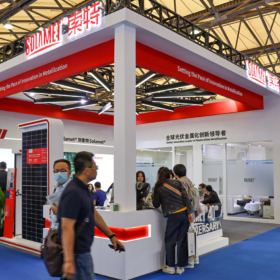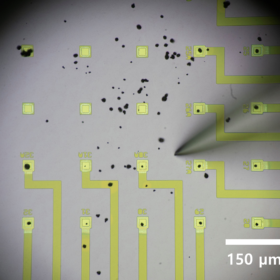Integration on hold: Energy Taiwan 2023
This week, pv magazine was in Taipei for the Energy Taiwan exhibition. The island is moving forward on net-zero ambitions and hosts a renewable energy industry ready to support other companies in achieving them. There is much focus on energy storage and grid integration, as Taiwan looks to create space in its grids for more renewable energy. However, with elections upcoming in early 2024 and one party likely to favor nuclear over renewables, many projects are now on hold.
Combination of half-cut, bifacial solar cell designs may contribute to hotspot formation
Scientists in Spain tested PV modules under partial shading conditions, aiming to better understand the formation of performance-damaging hotspots. The study reveals a potential issue particularly affecting half-cell and bifacial modules, which may cause accelerated performance loss and is not covered by current testing/certification standards.
Solar energy in the real world – EUPVSEC 2023
Practical matters, beyond simply improving on solar cell efficiency, have led the agenda at the European Photovoltaic Solar Energy Conference (EUPVSEC) going on this week in Lisbon. Policy and the geopolitics of solar manufacturing is the big question on everybody’s lips as the event passes its halfway point today. Concerns including grid integration, critical materials consumption, and public acceptance are all being aired frequently – illustrating a closer than ever link between work being done in the labs at solar energy institutes and the everyday lives and energy consumption of people in Europe and around the world.
EUPVSEC: Cautious optimism over local production
As the 40th edition of the European Photovoltaic Solar Energy Conference and Exhibition (EUPVSEC) gets underway in Lisbon today, it’s clear that European PV manufacturing faces some difficult challenges in the current climate of low prices and strong competition on all sides. Nonetheless, the show is already revealing plenty of optimism among the continent’s PV manufacturing players.
Accelerated testing procedures for perovskite solar cells
Scientists in the US developed a series of accelerated testing procedures designed to predict how perovskite solar cells will perform when installed outdoors for a long period of time. The study finds that combined, simultaneous exposure to light and heat gives the most accurate of how a perovskite solar cell will perform in the field.
New silver paste product promises TOPCon solar cell gains
China’s Solamet has launched a new silver paste product for tunnel oxide passivated contact (TOPCon) solar cells processed with laser carrier injection technology. By solving a problem related to contact between the paste and the boron doped front surface of the silicon cell, it promises an efficiency improvement of at least 0.2% over competing products.
Greenpeace notes widespread greenwashing among fossil fuel companies
A new report published by environmental campaign group Greenpeace analyses financial statements from 12 major European headquartered oil companies. The study finds that, despite many public claims to be participating the energy transition, both the current activities and future investment plans of these companies are dominated by fossil fuels.
Quantum physics, supercomputers, and solar cell efficiency
Scientists in the United States applied quantum computing techniques to the study of singlet fission – a little understood phenomenon that carries the potential to greatly increase solar cell efficiency. For now, the study reveals more about potential applications for quantum computing than for solar cells. But the techniques demonstrated could eventually helps scientists identify better materials for highly efficient solar cells.
Cracked cathodes not all bad, battery scientists find
Scientists in the United States developed an innovative method to observe the inner workings of lithium-ion batteries and found that cracks which form in the electrode – something manufacturers do their best to minimize – may actually have benefits in allowing for faster charging. The work also challenges assumptions on how certain particles behave inside a battery, with potential consequences for their future design.
Laser optimization for half-cut solar cells
Scientists in Korea examined the parameters of laser ‘scribe and break’ processes used to cut silicon cells, in search of optimizations to reduce damage caused at the cut edges. They also found that varying encapsulant thickness or even adding a supportive rail across the back of a module can help reduce performance loss caused by cell cutting damage.











